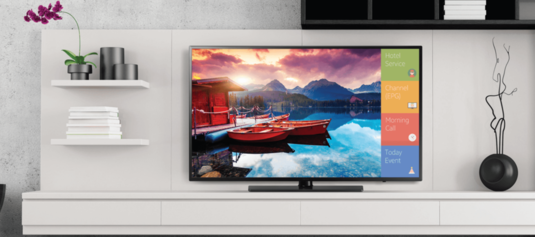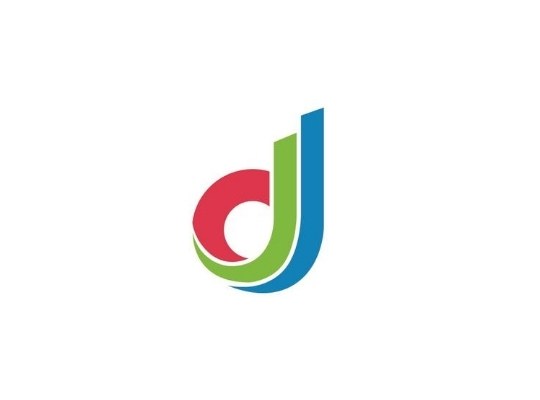Almo Professional AV leverages hospitality industry for growth

Almo Professional AV, a commercial audio/visual distributor, recently expanded its headquarters to support its growth. Much of that growth has come from the hospitality segment.
In fact, hospitality has consistently been one of Almo’s fastest-growing verticals, catalyzed by its acquisition of IAVI in 2016.
“The acquisition essentially doubled our hospitality business and it was the perfect opportunity to combine our strengths in specialized sales, business development and leadership with the goal of expanding the opportunity beyond the guest room TV. We’ve expanded our offerings from primarily in-room entertainment to include guest comfort and conveniences; banquet and meeting spaces; guest experience and revenue drivers; and indoor/outdoor furniture and recreation,” said Apryl Lamberti, Almo’s director of Business Development.
Almo Corporation is the largest independently-owned appliance distributor in the country and has extensive relationships with appliance manufacturers. She said the hospitality division is “breaking the mold” between Almo’s traditional appliance dealers and professional AV dealers and integrators by “cross-pollinating its offerings and infusing hospitality-focused lines.”
The company saw an opportunity in hospitality because of wireless charging and travelers’ reliance on mobile devices and keeping them charged. Almo just entered an exclusive distribution partnership with Nonstop, a new-to-market brand that uses the Qi-Wireless charging platform for its modern, designer-like alarm clocks/charge pads, for example.
“Also, outdoor hotel areas are big. More attention is being spent on designing these areas to be an extension of the hotel and resort’s common spaces, which results in creating memorable guest experiences that help drive loyalty rates,” Lamberti said.
Interestingly, outdoor living has been one of the biggest areas of growth for Almo. The company is also getting ready to launch a commercial contract line of outdoor furniture that will be exclusively distributed by Almo Hospitality.
“For example, last year I stayed at a Renaissance property in Austin. This property was surrounded by plush and rolling landscape and its outdoor area was aptly named ‘The Treehouse’ as it was positioned right among a massive oak tree canopy. This balcony had plenty of outdoor seating: sofas, high-top dining tables, plus an oversized built-in fire pit. Two nights in a row after dinner I checked out The Treehouse and was pleasantly surprised by no less than 10 to 12 hotel guests, none of whom knew each other but who had guitars. I watched complete strangers join together singing folk songs, in The Live Music Capitol of the World. It has been more than a year since I stayed at this property but when I make it back to Austin, you can bet this is where I will book,” Lamberti said.
This example, she adds, underscores why properties that create environments utilizing their actual environments are successful.
“Environments that utilize the surrounding landscape or ways to feature some outdoor fire tables, fountains, lighting, audio, etc. to create spaces unique to that property with a local flair to make a memory sticks with the guest long after they’ve left the property. They are also more likely to write a positive guest review or share their experience on social media, which is a win for the hotel,” she said.
Looking ahead, Jim Nista, senior director of Content Creation Services, said wayfinding, event listings and “go boards” are the biggest opportunities for digital signage in the hospitality segment.
“We frequently get requests for dynamic event screens showing a facility map so guests can find their way to meeting and event spaces,” he said. “For go boards, we do still get requests for local amenities content – although this is decreasing more and more as local businesses change and guests are used to using apps on their phone for recommendations.”
In the hospitality space, the king of content is premise event listings with dynamic maps showing each available room, Nista said.
Almo is currently working on a few case studies with its reseller partners to highlight some of the trends the company is seeing for in-room entertainment and digital signage.
Looking ahead, Nista predicts automation to emerge as a bigger theme in digital signage.
“Automated or easy to update hyper local content is what we get frequent requests for. Guests require relevant local content on information screens – this needs to be easy to update or automatically feed in from data services,” he said.
Lamberti adds that the opportunities are strong for the company and the industry in general.
“In the past 15 or so years, hotels have typically trailed behind the changing consumer market when it comes to technology updates,” she said. “It’s always surprising to me when I hear how many properties are still piping in standard definition content for free-to-guest channels in the guest rooms. From what we’ve seen in the market, the time is ripe for professional AV companies and hospitality-specialized resellers to invest in supporting the specific needs of hoteliers and understanding what their motivations are compared to a typical retailer.”
The time for trailing behind, however, has to come to an end, she adds. AVIXA recently predicted that $3.1 billion will be spent in digital signage in 2019 and consumers interacting with screens is a regularity now.
“The reality has hit and for the last decade, hotels have relied on interior designers to create environments that captivate guests using color, décor, lighting, textures and other elements of design. However, with the speed at which technology changes, and with how advanced consumers have become, it’s no longer an option for hotels to count on traditional methods of interior design to give guests the feeling of technology incorporated into their world,” Lamberti said. ”If they don’t start deploying digital signage technology and using content to engage guests, guests are going to follow the newer brands and boutique brands that have migrated to incorporating digital screens into their properties and the traditional hotels will start to slip in occupancy rates as millennials quickly approach nearly 50 percent of the workforce.”






